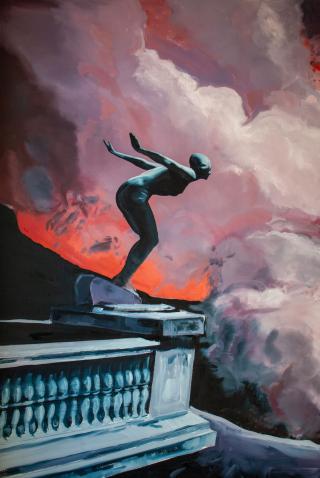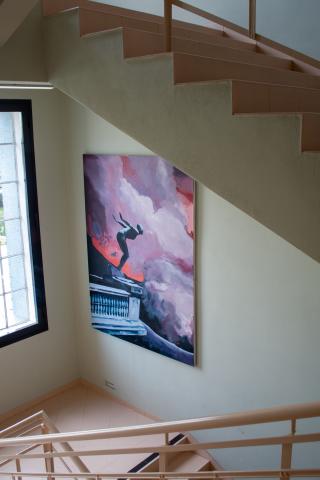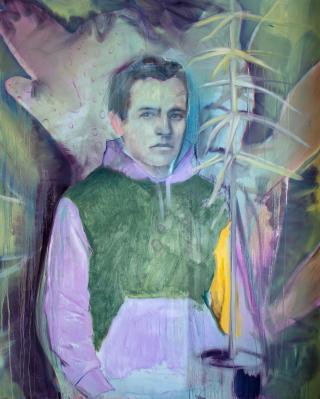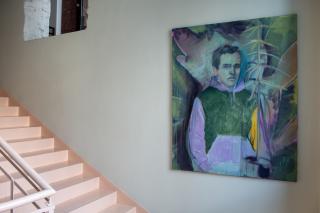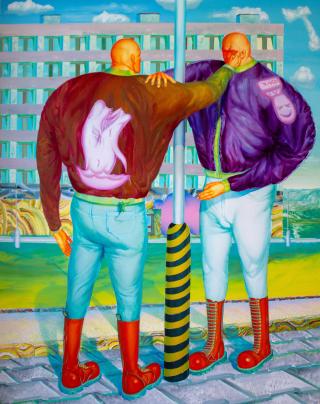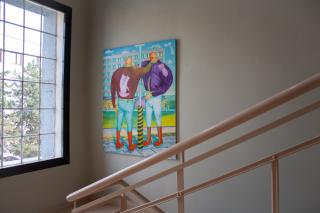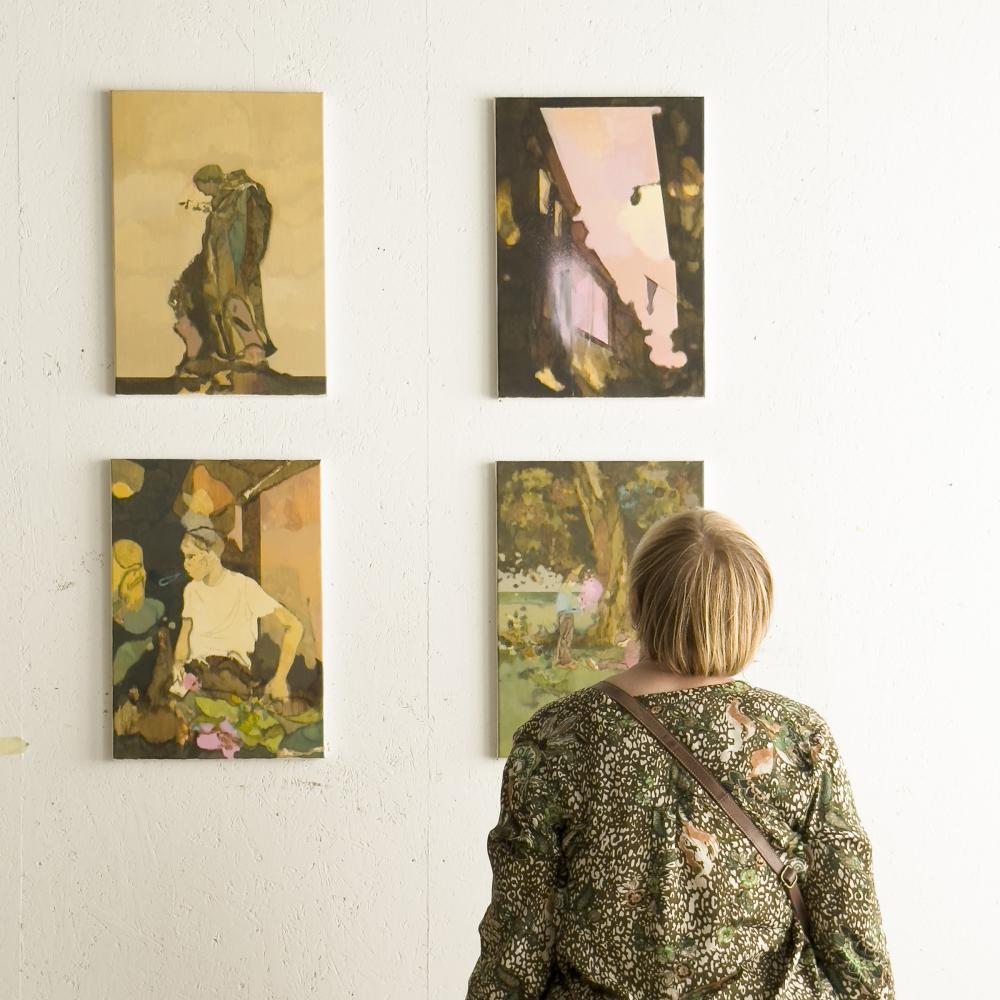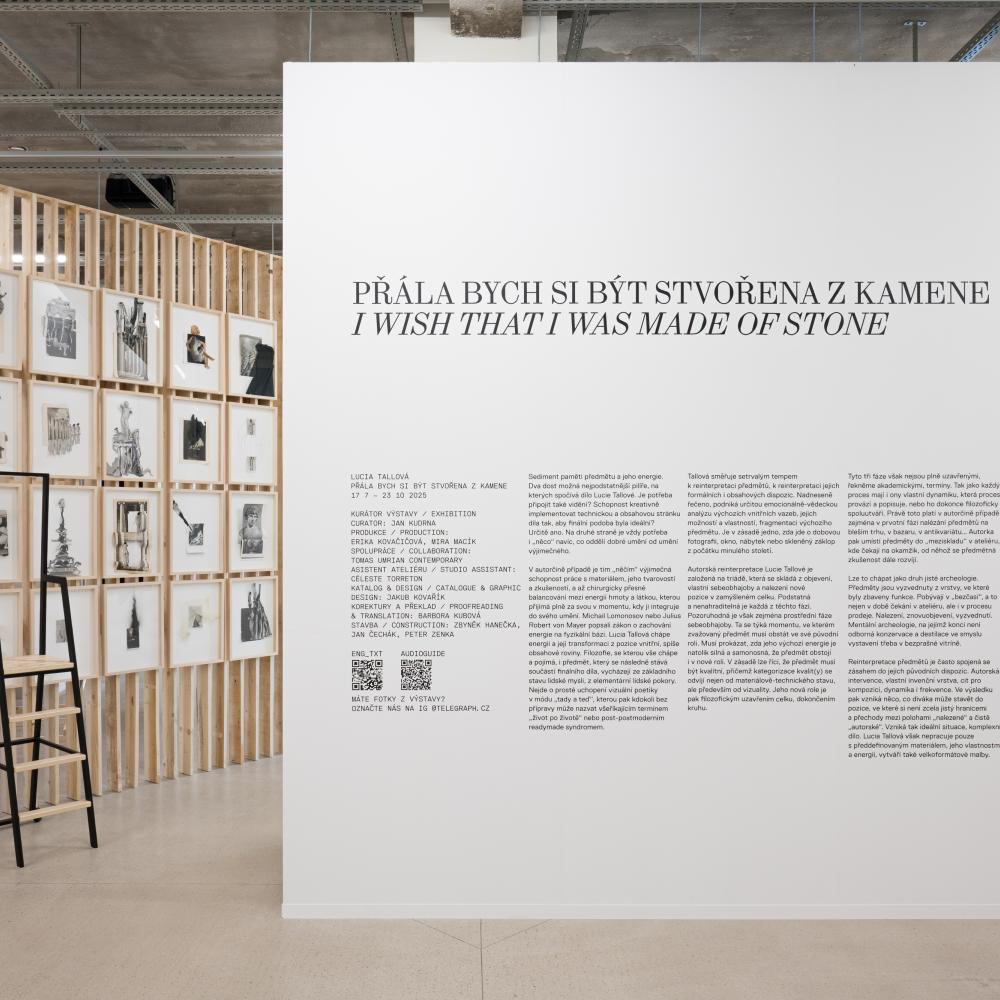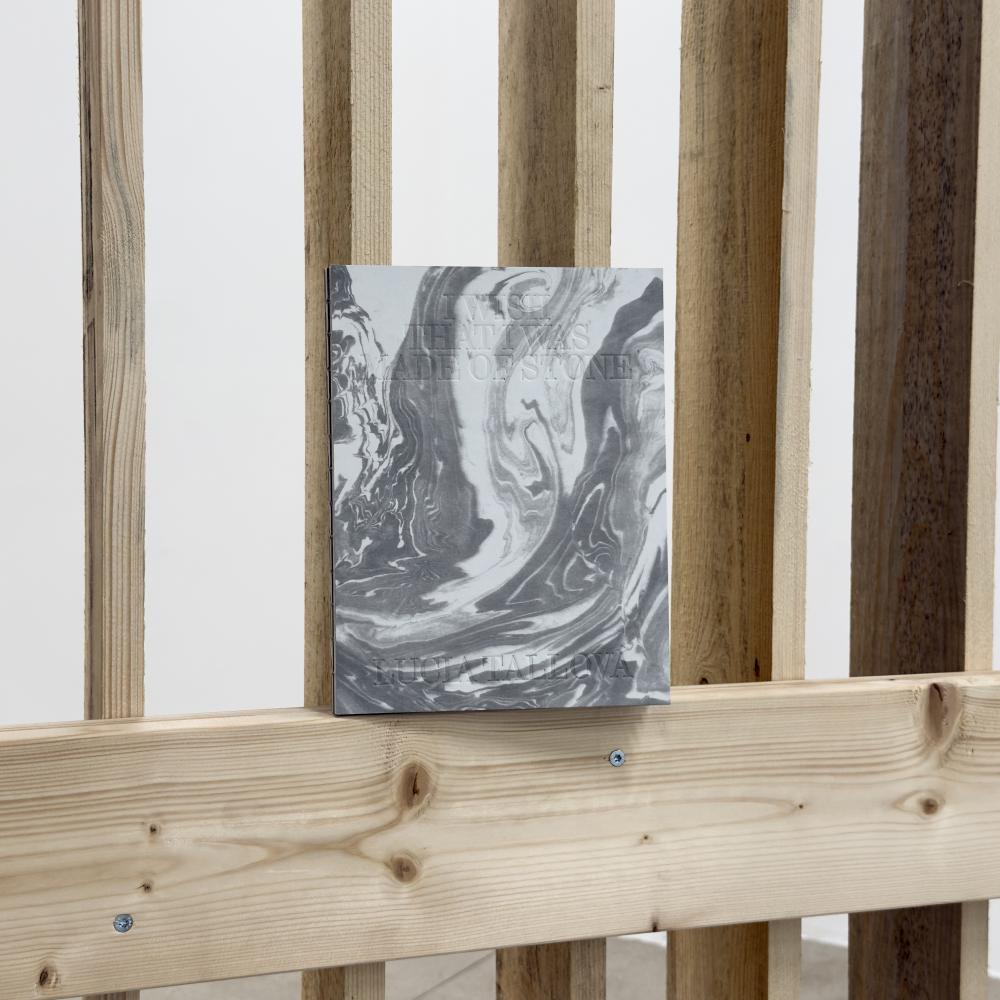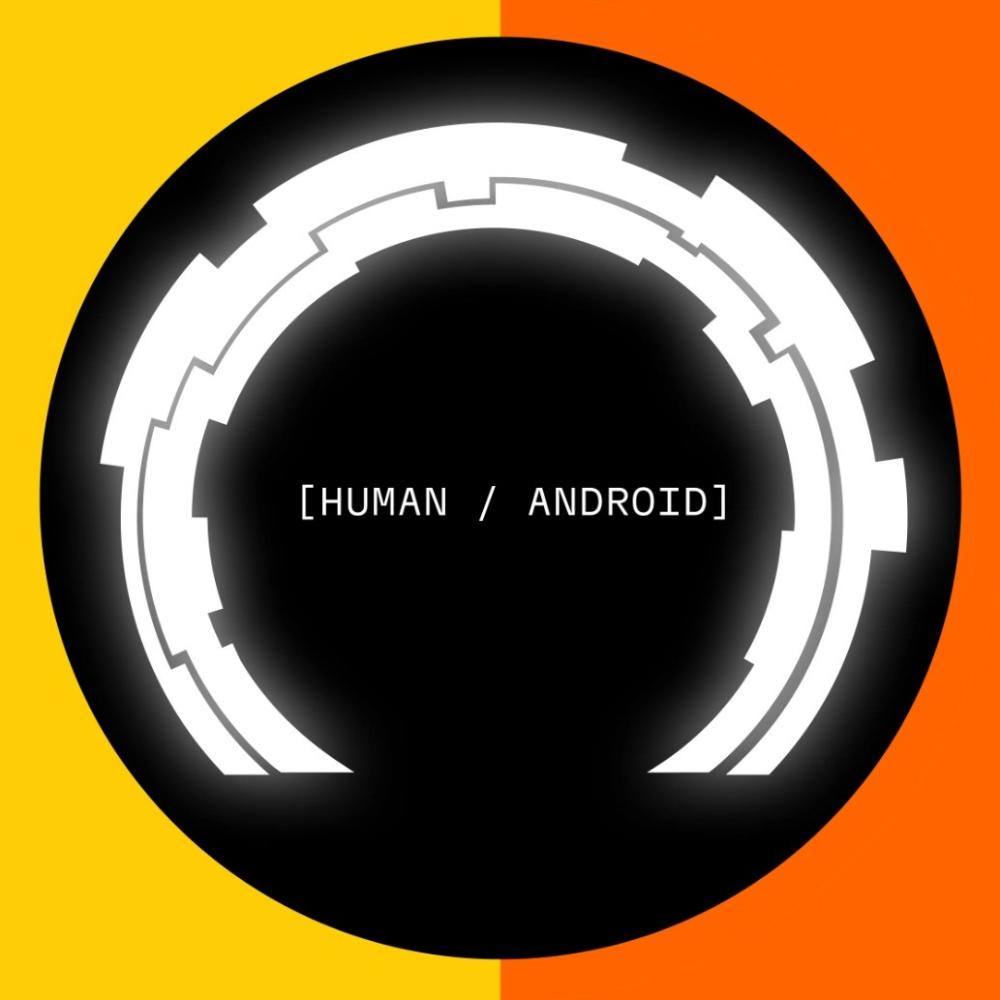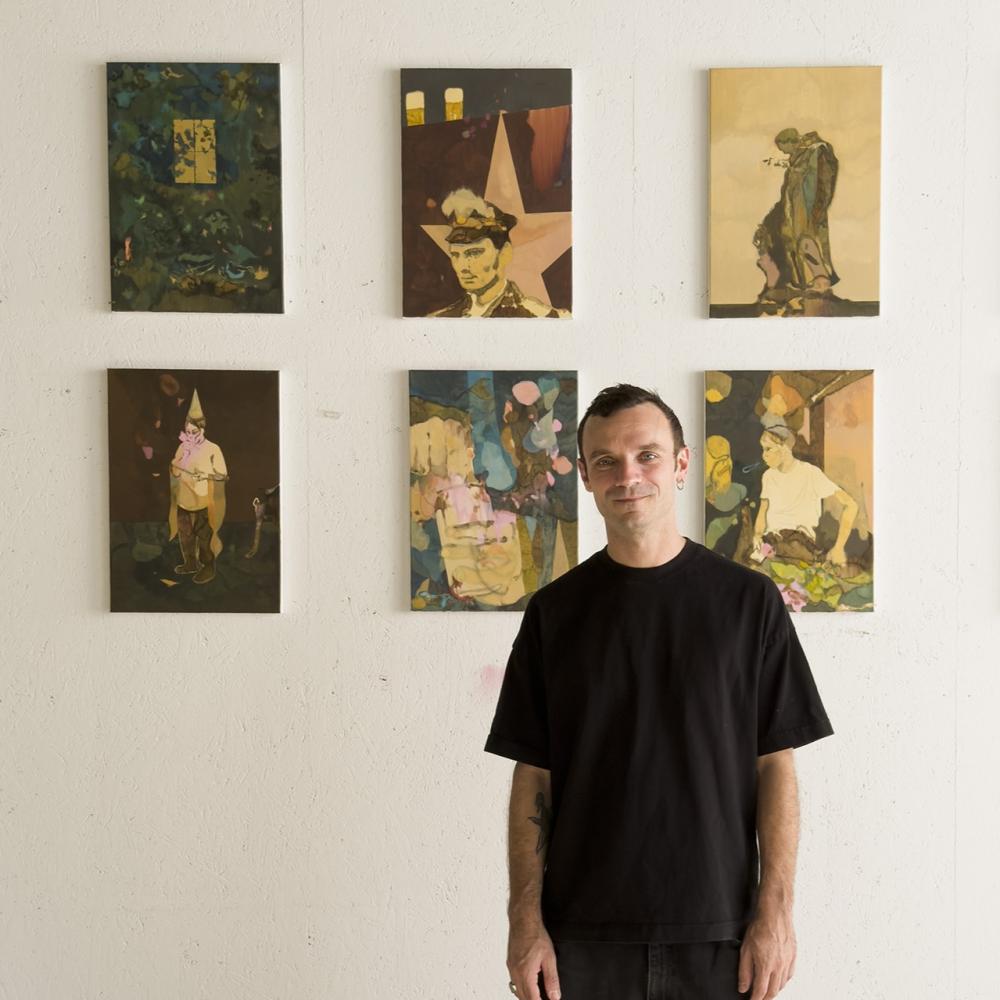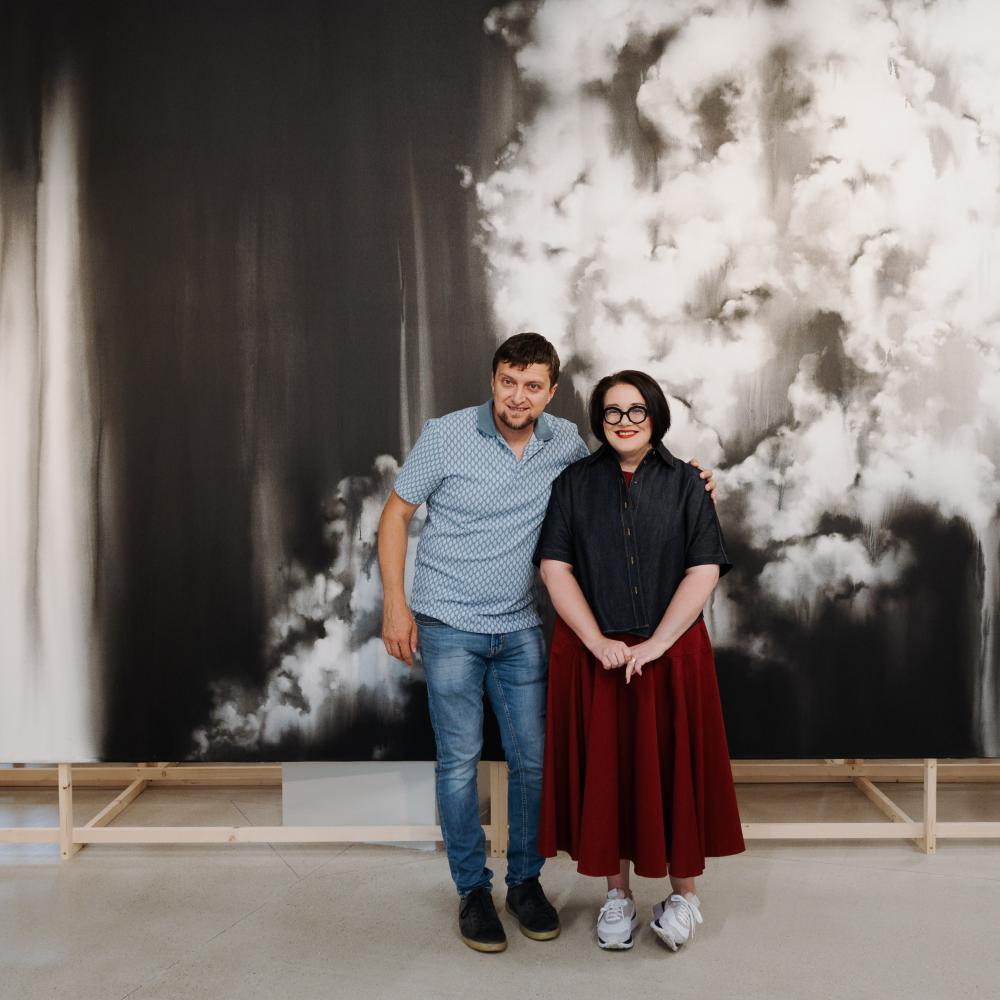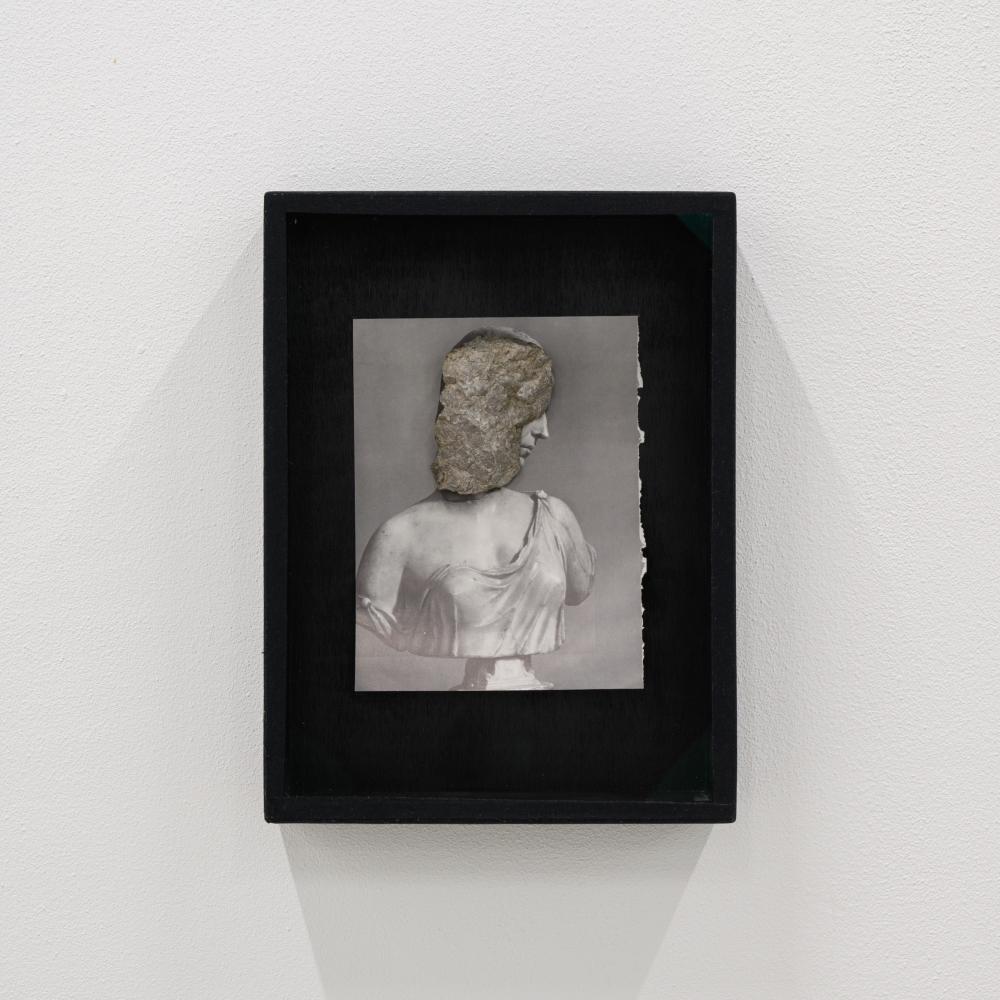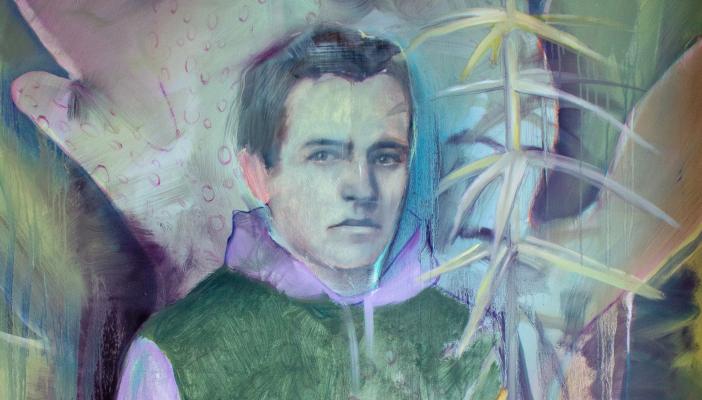
Telegraph gallery does not offer encounters with visual art only in the main exhibition hall of the gallery or in occasional installations in the cinema hall or loft. If you're a regular visitor to the Telegraph, you may have already noticed the new works that have joined Stefan Belohradsky's existing metal object (Klas, 1974) and enlivened the mezzanine walls. These are large-scale canvases by three young artists, created in the last few years.
First, when climbing the stairs from the first floor, it is an oil painting by Václav Buchtelík called Jump (2020). The subject of Buchtelík's paintings is often various forms of anxiety or terror, which can also be represented by the jump into the unknown void depicted here. Nevertheless, the figure gives an uninvolved, almost calm impression that is at odds with the scene evoking uncomfortable anxious feelings. Also typical of Václav Buchtelík is the demonic background, full of clouds of smoke from the erupting volcano. It figuratively depicts a society (in Buchtelík's paintings it is often a socialist society) looking paralysed towards demonic destructive forces.
The counterpart to Buchtelík's world in decay is a static, nameless portrait by Jakub Čuška from 2021 on the opposite wall. The depiction of the young man is entirely subject to the traditional way of depicting the figure in Čuška's paintings. The painter first starts from a photorealistic approach in rendering the face, but then disrupts the narrative and transfers it into a dreamy, blurred, otherworldly representation in which the volume of the human body dissolves into vague shapes. This double grasp also hints at the very nature of the contemporary world - the desire to see down to the very detailed essence of the things and phenomena that surround us, and the subsequent realisation that it is almost impossible to achieve such deep knowledge.
One floor above is the last painting, Cryboy (2022) by Samuel Kollárik. In his controversial paintings, he thematises minority groups of the skinhead movement. Also typical is the very distinctive colouring and distortion of the figures, forming Kollárik's unique and recognisable visual style. The scenes depicted are often full of violence, but also surprising emotional warmth. The same is true in the painting Cryboy, where two men engage in a strange fist fight from a sufficient distance and through a barrier formed by a street lamp. The picture's message is then somewhat contradictory - elements of the comic or even absurd are mixed with the uncertainty of whether the situation depicted is truly comic or rather a message of the serious.
By Barbora Langová
